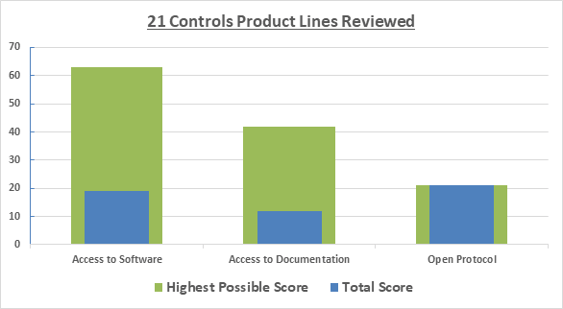The floor was packed with a bustling crowd, filled with people from every branch of the Heating Ventilating and Air Conditioning (HVAC) industry. They were making contacts, meeting friends, and checking out the latest and greatest technologies. There were young professionals eager to experience what the industry has to offer. They were seeing the current state of the art but also thinking about the future as they pass vendors strutting their stuff. Everywhere you looked, there were folks dressed smartly, representing their products with a smile and a handshake. Everyone was boasting about their latest tech, itching to perform the ritual tchotchke handoff in the hopes that someone will remember their product and give them a call after the dust settles. All of this was housed at a convention center so large it has its own bus port and ceilings so high they make your local Walmart superstore look like a tent at a county fair.

During the ASHRAE Winter Conference and Expo in Chicago this year I came ready and armed with a spreadsheet and an idea. I wanted to attempt to measure the openness of the Building Automation Systems (BAS) market. I thought to myself: “What better place to take such a measurement than at the ASHRAE Expo?”
Why Measure Openness?
That’s the burning question, isn’t it? We cannot control what we do not measure. Owners are the end use customer we all serve. Therefore, they are the ones that suffer the consequences of our industry’s choices and offerings. One example that most commonly causes building owners to suffer is territorial dealer networks creating vendor lock-in. I don’t think owners and facility departments have a place to go for determining what building controls products are more open than others. They must make decisions based on marketing cutsheets and websites which keep things vague and use a lot of buzz words. So, I took a stab at measuring it. Somebody’s got to at some point, right?
As I have asserted in a previous blog post, I believe that the HVAC controls industry would benefit from more openness. Open systems are defined as systems that conform to standards independent of any manufacturer. The industry could use a nudge in that direction and start by just allowing access to their software tools and documentation. This push for greater openness allows for several industry benefits which the software engineering industry (outside of HVAC) generally embraces. PCWorld Magazine has a good article listing 10 reasons why open source is good for business. To be clear, I am not hoping for the BAS market to volunteer or donate their source code but, rather, to allow free access to the software engineering tools for building automation systems so that continuous improvement of HVAC operations and increased energy efficiency is easier to achieve by all industry stake holders. I believe in this benefit for the same reasons that the software engineering industry views openness as a positive force:
- Increased quality
- Peer review
- Customizability
- Freedom from vendor lock-in
- Continuous improvement
- Increased competition
Methodology
I acknowledge the inherent bias of my measurements due to my background in building controls design and as a commissioning agent. However, I intend to refine this system of measurement and update it over time. This is just a first attempt at taking the pulse of the market. Like the first measurements taken of any particular parameter, it will be inaccurate and imprecise at first, but better than no measurement at all. If you have suggestions, please feel free leave a comment below! Consider your comments as a forum for peer review; I’ll update this post in a year or so to see if we see any improvement. I reviewed all the vendors at the ASHRAE expo and the vendors that are large market players (even if they weren’t at the ASHRAE Expo). Note that I have anonymized my individual scores to keep things clean and friendly.
Measurement Criteria
Join me as we develop a process for measuring openness in building controls products. Let us create a point system to measure the openness of the industry and start by awarding a single point for any controls product line that is interoperable. Every product I saw at the ASHRAE Expo was interoperable either by BACnet, LonWorks, or by Modbus. We can see that most controls products qualify for this point right out of the gate, so we’re off to a good start. Now we can award points for where the openness rubber meets the road of reality.
Let us create two more categories:
- Access to controls programming software
- Access to controls installation and programming documentation
For these systems to increase their openness, they must provide users with the ability to review the code running the HVAC equipment with no barriers. This means that industry stakeholders, like facility management, design engineers, local controls vendors, and others (such as larger organizations with energy managers like municipalities, universities, and large corporations), should be able to access, review, and, if need be, modify the logic controlling their HVAC systems. Just like you can currently access and modify all the components of the car you own either in your home garage or indirectly (through ANY local mechanic), controls products should allow users the same level of access. This is largely not the case for today’s HVAC controls industry unless a facilities management department buys an expensive license, or purchases software packages that local vendors are largely reluctant to sell. This is like buying a car with the hood locked so only the dealer can open it. Sometimes the dealers might put a window in the hood, but it’s still locked so you cannot change your spark plugs; you can only see that you need to call your dealer.
Let us create a 3-point score for access to controls programming software:
- 3 points: The software can be downloaded instantly online, without any financial or other barriers. All a user has to do is go to the manufacturer’s website and click download.
- 2 points: The software can be purchased online via a credit card and downloaded instantly. A building owner can buy the software without having to jump through any other hoop than an online ordering portal.
- 1 point: The software is pseudo-available. A user must create an account, can buy instantly online if pre-approved by their local vendor, or can purchase directly from their local vendor (or obtain by some other means).
- 0 points: The software can only be purchased by a controls dealer network and is not available to users.
For these stakeholders to be able to interpret the code running their HVAC systems, they need access to all the documentation. To properly evaluate the effectiveness of a given piece of logic in a sequence of operations, a user must have this reference material. To continue our car analogy, it’s like trying to do an oil change now that you’ve bought the wrench from the dealer, but they’ve hidden the oil plug and have given you no instructions on where to look. The longer you go without the oil change, the more your mileage suffers. This forces you back to the dealer. Who would buy this car?
So, let us create a 2-point score for access to controls installation and programming documentation:
- 2 points: The documentation can be downloaded instantly online, without any barriers. A user can go to the manufacturer’s website and all the programming and installation manuals are available for download or reference.
- 1 point: The documentation is pseudo-available (same as defined above).
- 0 points: The documentation is only available to the dealer network.
Results

This measurement is like an industry report card, it’s not bad but has some room for improvement. I think that we are already seeing that improvement and it will grow over time. The next generation of HVAC controls professionals are leveraging tools of the modern age like Kickstarter and Raspberry Pi to test the market and grow ideas within an open source community. Even some established controls vendors are hopping on the bandwagon and are developing tools to enable greater openness on established brand-recognized platforms. To accelerate market change, we need more building owners demanding that BAS controls manufacturers change the business model as follows:
- Do away with dealer networks. Enable and encourage local competition.
- Allow free access to documentation.
- Allow free access to software engineering tools.
- Encourage 3rd party peer review for efficiency opportunity identification.
Conclusion
The more competition these building owners see among local vendors, the more they will see return on investment. These products will leverage competition for increased quality of service, customizability for greater energy savings during retrocommissioning projects, and continuous internal improvement as the maintenance workforce becomes more software savvy in our increasingly digital world. Keep in mind that today’s high school graduate looking to enter a trade was born in 2000, and has been raised in an internet connected world. They are the HVAC maintenance staff of tomorrow, they are the building owners of tomorrow. They will be comparing what’s out there to what they’ve known in an open source world, and some of them were at the ASHRAE Expo.



